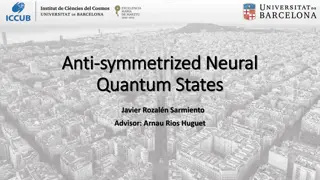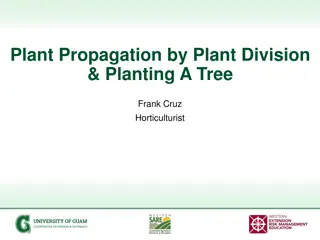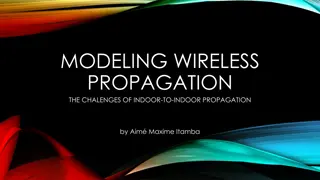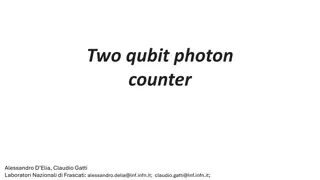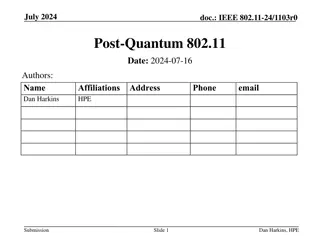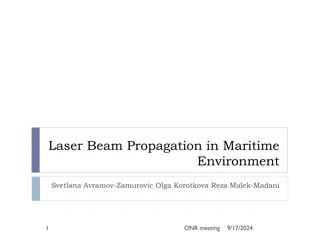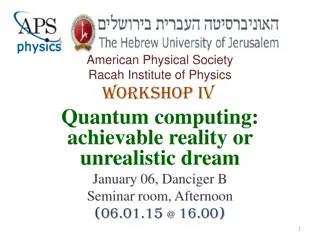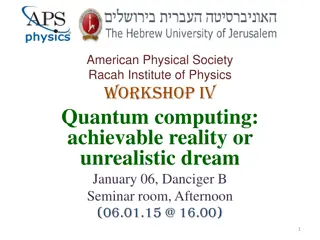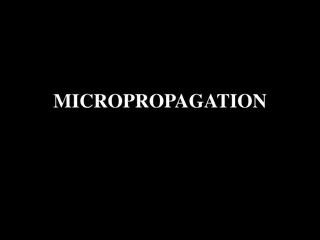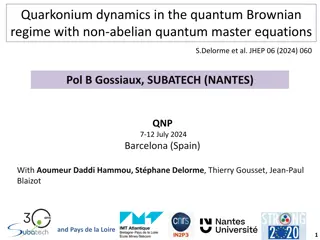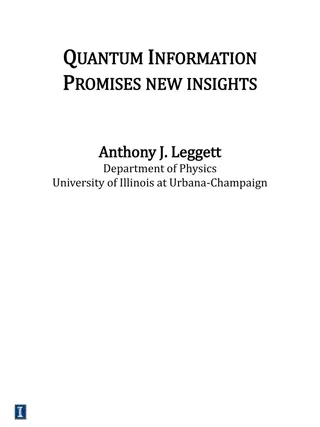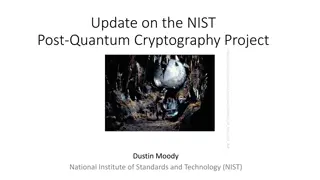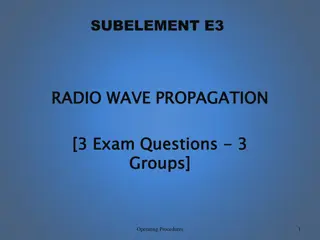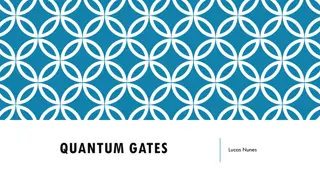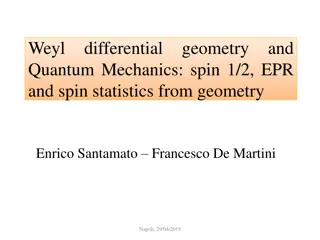Insights into Information Propagation in Long-Range Interacting Quantum Systems
Explore the dynamics of isolated quantum systems through quantum quenches, Lieb-Robinson bounds, and the Transverse Ising Model. Delve into experiments with one-dimensional quantum gases and long-range interactions in Hamiltonians, shedding light on information exchange, relaxation, and equilibrium behaviors.
Download Presentation

Please find below an Image/Link to download the presentation.
The content on the website is provided AS IS for your information and personal use only. It may not be sold, licensed, or shared on other websites without obtaining consent from the author.If you encounter any issues during the download, it is possible that the publisher has removed the file from their server.
You are allowed to download the files provided on this website for personal or commercial use, subject to the condition that they are used lawfully. All files are the property of their respective owners.
The content on the website is provided AS IS for your information and personal use only. It may not be sold, licensed, or shared on other websites without obtaining consent from the author.
E N D
Presentation Transcript
Information propagation in long-range interacting quantum systems Mathias Van Regemortel, Dries Sels, Michiel Wouters Reference article: Mathias Van Regemortel, Dries Sels, and Michiel Wouters Phys. Rev. A 93, 032311 (2016)
Quantum Quenches Isolated quantum system: We kick the system out of equilibrium Unitary dynamics In general the system is not in an eigenstate of H 2
Quantum Quenches The protocol: Central questions: How fast can information be exchanged between distant points? How does the system relax again after the quench? What is the equilibrium ensemble after relaxation? 3
L Short-range interactions t L/c 0 Bound on commutator: (Lieb Robinson 72) characteristic velocity c Bound on correlation function: (PRL 97 Bravyi, Hastings, Verstraete) Extra factor 2! Emergent light cone, effective locality 5
L Transverse Ising Model: Quasiparticle view (Calabrese, Cardy 05) After quench quasiparticles start travelling at speed c through system 6
Experiment One-dimensional quantum gas in optical lattice M Cheneau et al. Nature481, 484-487 (2012) doi:10.1038/nature10748 7
L Short-range interactions t L/c 0 Bound on commutator: (Lieb Robinson 72) characteristic velocity c Bound on correlation function: (PRL 97 Bravyi, Hastings, Verstraete) Extra factor 2! Emergent light cone, effective locality 8
Long-range interactions Hamiltonian with interactions Ubiquitous in nature, e.g. Coulomb interaction Can be implemented with trapped ions: P Richerme et al. Nature 511, 198-201 (2014) doi:10.1038/nature13450 9
The light cone Michael Foss-Feig et al., Phys. Rev. Lett. 114 (2015) 10
The Long-Range Kitaev Model J, describes hopping and pairing of fermions Exponent controls range of long-range pairing interactions Quenches from Exactly solvable model Reference article: Mathias Van Regemortel, Dries Sels, and Michiel Wouters Phys. Rev. A 93, 032311 (2016) 11
Quasiparticle velocities From the spectrum we can compute the quasiparticle velocity distribution: Divergent group velocities Yet, most weight inside well-defined peaks 13
Mutual information Causality well preserved for LR interactions! 14
Different systems with LR interactions L. Cevolani et al., Phys. Rev. A 92, 041603 (2015) Ising Bose-Hubbard 15
Conclusions Lieb-Robinson bounds provide very powerful limits on information propagation in short-range interacting quantum systems The Lieb-Robinson bound for long-range interacting quantum systems is too loose in many cases In the LRK model by far most of the information propagates inside a well-defined light cone The quasiparticle spectrum allows for a consistent explanation The physics of long-range interacting quantum systems seems to be very much model-dependent Reference article: Mathias Van Regemortel, Dries Sels, and Michiel Wouters Phys. Rev. A 93, 032311 (2016) 16
Correlation function >1: Locality preserved <1: Power-law decay at large distances Light cone: 18
Relaxation after quench Long-range interactions allow for slowing down, rather than speeding up dynamics!







